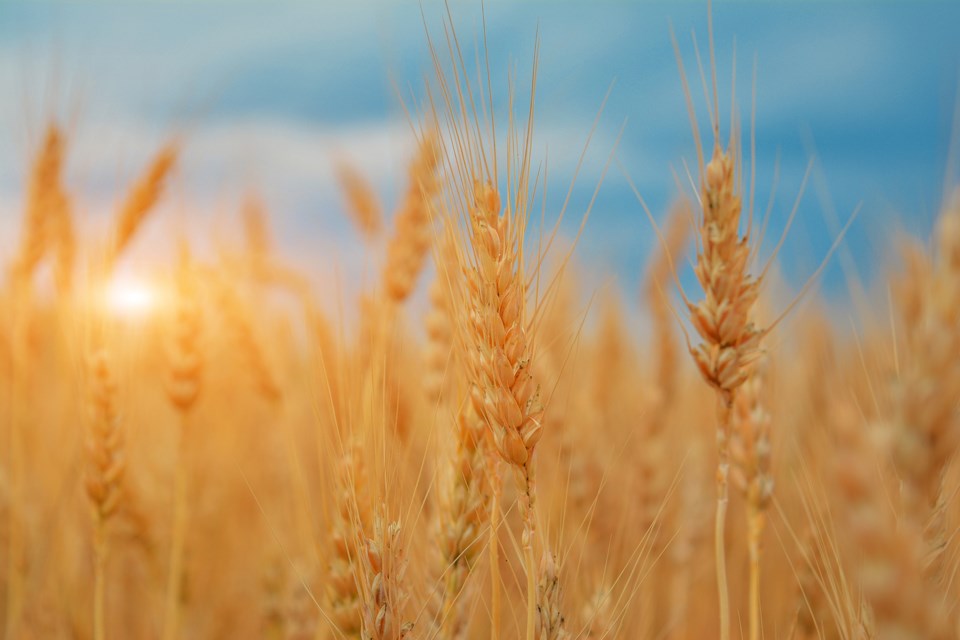EAST CENTRAL — Many areas of the province that are in need of rain did not receive any this past week, June 4 to June 10.
However, localized rain helped to relieve dry topsoil moisture conditions in the northwest and southeast. The moisture will help with crop germination and growth, while encouraging hay land and pasture growth.
Northeastern Saskatchewan
The Arborfield area received 16 millimetres of rain this past week. The Nipawin area reported 10 millimetres, the Kinistino and Tisdale areas nine millimetres and the Spruce Home area five millimetres. The Nipawin area has received the most precipitation since April 1 (62.5 millimetres). The Birch Hills area has recorded the least amount of rainfall for the region since April 1 (20.9 millimetres).
Despite the rain, topsoil moisture conditions have continued to worsen due to strong winds. Cropland topsoil moisture is rated as 44 per cent adequate, 38 per cent short and 18 per cent very short. Hay land and pasture topsoil moisture is rated as 44 per cent adequate, 40 per cent short and 16 per cent very short. Crop District 8B is reporting that 33 per cent of cropland and 49 per cent of hay land and pasture are very short topsoil moisture at this time. Timely rains are needed in the coming weeks to help crop emergence and growth as well as growth of hay land and pasture.
Overall, crops are at or behind their developmental stages for this time of the year. Emergence has been delayed in many areas by a lack of moisture. Fifteen per cent of the fall cereals are at the shotblade stage and 44 per cent are heading, while 51 per cent of the spring cereals are tillering. Twenty-four per cent of the canola and mustard is emerging, and 46 per cent is in the seedling stage along with 28 per cent of the flax. Ninety-nine per cent of the pulse crops are emerging and in the vegetative growth stage at this time.
The majority of crop damage this past week was caused by strong winds, frost, insects such as flea beetles and cutworms and lack of moisture.
Farmers are busy controlling weeds and insects in their crops.
East Central Saskatchewan
Rain over a portion of the region this past week has somewhat helped crop conditions and development. The Esterhazy area received 16 millimetres , the Langenburg area 12 millimetres , the Goodeve area eight millimetres and three millimetres in the Rhein, Rama and Kelvington areas. The Rocanville area has received the most precipitation since April 1 (54 millimetres). The Wynyard area is reporting the least amount of rain for the region at 11 millimetres . The region will need significant rainfall in the coming weeks to get crops, pastures and hay land growing. There are concerns that if rain is not received soon, current soil moisture levels will not be enough to support a crop. Some hay fields have prematurely headed out and crops have been slow to emerge and grow.
Topsoil moisture conditions continue to worsen due to the strong winds and lack of moisture. Substantial rainfall is needed across the region to help crop germination and growth as well as pasture growth. Cropland topsoil moisture is rated as eight per cent adequate, 34 per cent short and 58 per cent very short. Hay land and pasture topsoil moisture is rated as five per cent adequate, 22 per cent short and 73 per cent very short. Crop District 6A is reporting that 75 per cent of cropland and 88 per cent of hay land and pasture are very short topsoil moisture at this time. Timely rains are needed in the coming weeks to prevent significant yield loss.
Crop emergence has been patchy and slow due to the lack of moisture, causing the majority of crops to be behind their normal developmental stages. Thirty-two per cent of the fall cereals are at the shotblade stage and 31 per cent are heading, while 33 per cent of the spring cereals are tillering. Thirty-seven per cent of the canola and mustard is emerging, and 31 per cent is in the seedling stage along with 20 per cent of the flax. Ninety-six per cent of the pulse crops are emerging and in the vegetative growth stage at this time.
Crop damage this past week was caused by frost, dry conditions, strong winds, flea beetles and cutworms.
Farmers are busy spraying pests in their crops.
The crop report is provided each week by the Government of Saskatchewan.



